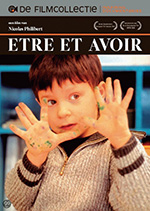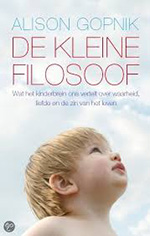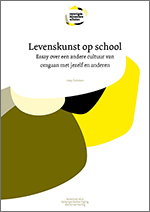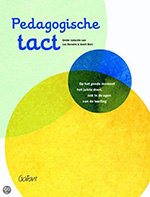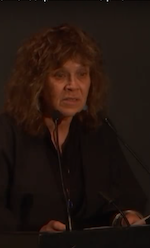
Hieronder is een speech van Carol Becker uitgeschreven, zoals ze dit voordroeg als voorwoord bij de lezing van Fred Moten in het MOMA in het kader van de reeks ‘Afterlives: The Persistence of Performance‘. Carol heeft al veel belangrijke bijdragen geleverd over de hedendaagse rol van kunstopleidingen en hun manier van werken (zie read more op haar website).
Uit de hier uitgeschreven en ingeleide tekst spreekt, wellicht vanwege de thematiek van de lezingen, een wat filosofischere toon. Dit maakt dat haar ideeën breder toepasbaar zijn dan kunstopleidingen alleen, bijvoorbeeld voor elk kunstvak op middelbare scholen, maar ook nog abstracter in het kader van een soort algemene kunstzinnige vorming die eigenlijk bij elke school op zijn plaats is. Dat maakt een wat vrijere interpretatie van haar lezing mogelijk die rechtstreeks ingaat op in ieder de rol van onderwijs en pedagogie in relatie tot datgene wat daarna komt, wat vaak als het ‘echte leven’ of ‘carriere’ wordt gezien en die richtinggevend zou moeten zijn voor waar het onderwijs over gaat. Carol redeneert echter vanuit het onderwijs dat vanuit de pedagogie die continue herdefinieert hoe en wat gedaan moet worden.
Daarbij kan je met Becker beargumenteren dat vooral het voorspellen van talent, determinatie, verlangen en doorzettingsvermogen indicatoren kunnen en moeten zijn die de onderwijsloopbaan dienen te bepalen voor kinderen. Die indicatoren helpen bepalen hoe en waar de leerling succesvol in zou kunnen zijn. Daarmee moet dit de basis voor het werk op scholen; voor wat zij noemt een ‘speculatieve pedagogie’. Deze pedagogie moet de leerling helpen definiëren waar hij of zij probeert te komen en hem te helpen daar te komen waar hij heen gaat. Dit is geen methodologie. Het is ergens tussen bewust en onbewust in, tussen ‘bedoeld’ en ’toevallig’ en maakt gebruik van intuïtie om de juiste analogieën te vinden om te communiceren over wat we zien en waar we op hopen.
Daarnaast verwijst Becker naar het domein ‘buiten school’, het domein waarop de school de leerlingen voorbereidt maar waar de school tegelijkertijd ook vorm aan geeft door middel van de nieuwe generatie die dit domein gaat vormen. Hoe dan ook verhoudt het werk op school zich dus tot die domeinen in de buitenwereld en hoe recalcitrant er op die school ook over bepaalde zaken of aanpakken wordt gedaan, vroeg of later zal die recalcitrantie onderdeel worden van de wereld buiten scholen en daarmee juist weer onderdeel worden van het kader waar vanuit een school zal moeten gaan werken. Dit betekent ook dat een school zich enigszins ambivalent moet verhouden tot recalcitrantie. Juist ook wat betreft de eigen methoden, gang van zaken of gewenste resultaten. En dat de pedagogie ook in die zin juist speculatief moet blijven. Vooruitlopend op veranderingen, mogelijkheden, scenario’s – ook die van het onderwijs zelf.
Scholen kunnen soms weerstand hebben tegen (digitale) technologische ontwikkelingen, juist omdat onderwijs ook of vooral haptisch, persoonlijk en zintuiglijk is, technologie staat dit veelal in de weg. Onderwijs moet dus enigszins subversief blijven en blijven onderhandelen in en over de aanwezigheid van regels. Het moet mogelijk zijn de regels te overschrijden en nieuwe ontwikkelingen in gang zetten, maar daarentegen moeten eerdere ideeën steeds worden teruggehaald ondanks dat ze allang zijn gepasseerd. Het onderwijs is tegelijk conservatief en progressief – of eigenlijk probeert het onderwijs beide voor te blijven om tot geen van de twee te kunnen worden gereduceerd. Er gaat namelijk iets aan die dualiteit vooraf en dat is waar het onderwijs mee bezig is. Vóór dat er ook maar sprake kan zijn van pedagogie, is er al het het maken van dingen, de praktijk. Voordat er een intentie is om iets te gaan maken, is er anticipatie en onrust. En bovenal het vormen van ideeën. Dat is waar een school zich in moet zien te manifesteren. De immateriële grond van waaruit pedagogiek kan worden gepraktiseerd.
En de discussie daarover? Het belangrijkste wat het onderwijs daar zelf aan bij kan dragen zijn de leerlingen die later die discussie moeten voeren. Het zijn namelijk die leerlingen en het proces wat zij van dag tot dag in het onderwijs doormaken, waarmee uiteindelijk de discussie in de toekomst wordt gevormd. Zij zijn de bijdrage aan de discussie zelf.
Hieronder de hele transcript van haar hele bijdrage in het Engels.
Dean of university columbia school of the arts, Carol Becker talks on education in art schools.
“Like many other educators in the room, and I know there are many, I have spend decades in a perpetual state of becoming. Immersed with students in a pedagogy ruded in the present but nevertheless calibrated always to the future.
Much of what we call art based practise is finally measured by the work former student accomplished in the art world when they leave us: the space of presentation that we think of as the afterlife. In academic circles this after-place is often referred to as the real world. The one where the work is judged and where careers are made or not made. Art schools are overtly ambivalent about such places and in part hide from the hypothetical future they represent in order not to drift too far away from the non-places, the utopian experiments that we engage in together.
During our times with groups of students we encourage them to fail and ofcourse to fail better before they experience the reckoning on the outside and the pressure to produce a presentable, categorisable, saleable body of work in a location where failure most often really isn’t an option.
At Columbia, young artist present themselves in the fields of visual arts, writing, film and theater – our particular configuration – and we then choose a select few to submit but these decisions are really somewhat arbitrary, why this person and not that one is actually a difficult question, because the evaluative system is not quantifiable, in fact there is often great disagreement about these choices. The prediction of talent, determination, desire and endurance, which might ultimately translate into succes during the time with us and even in the afterlife, is a speculative one.
In such environments we are all about pedagogy, which in our cases, is not actually an articulated methodology but rather a pursuit to define with these new artist where they are trying to go and how best to help them to get there. Those applying believe they need something more to prepare for their future, community, or expertise, access, knowledge, institution, verification, or perhaps just time out of time. Some who arive and abandon themselves to the present, and completely and to the interstitial spaces of multiple disciplines and peer relationships, and others are planning their entry into the afterlife from the moment they step through the door.
In the aesthetic inconsciousness, Rancière writes: art is being defined as the identity of a conscious procedure and an unconcious production, of a willed action and an involentairy process. Our pedagogy hovers there, between conscious and unconscious, delibered and accidental, and relies on intuition to find the right analogies, language to communicate what we see, what we hope could be. The words are ephemeral, spoken in critiques mainly.
That liminal space between the work, the student, the faculty, the visiting critic, perhaps represent for them the future machinery of the art world. We attempt to know and to advise in relationship to the nature of these worlds we anticipate they will enter but as we respond to their work, our knowledge of that world is already shifting: these new artist are its future and will inevitably reframe how we understand its past and its present.
Whatever discipline or subdiscipline they choose already has bodies of knowledge, depositories where thought begins, which others elude, because the history of that process lives in those particular afterlives and its representation within the nature of the form and intellectual representation to and by a next generation. Their production is either in accord with these histories, or in defiance with them, but if the work is interesting enough, it might ultimately find itselves entering these depositories, no matter how resistant to such possibilities it at first appears. The world in which these dynamics occur, has some of the wildness Jack Halberstam refers to, in the preface tot Stephano Harneys and Fred Motens ‘the undercommons’. Art schools are wild, because for the most part they refuse to call the class to order (in Halberstams phrase), they won’t be tamed, and might be one of the few sites left, of such refusal in the academy; a place now enamered by ‘big data’, Moocs, ‘flip the classrooms’, techno-startups, assessment of all things. Despite it being very savy about technology, art schools are also haptic, personal and tactile.
That is the retro and progressive nature of them. They struggle to stay thruth to their subversiveness, forever negotiating their location within an overabundance of rules, while they insist always on bringing back what has essentially be moved beyond. Even before there is pedagogy, there is the making of things. Before such intent, there is anticipation, anxiety and the formation of ideas. Art schools live in that space, and encourage the fierce hope, that if artist make the work they want to make, it will find a home in the afterlives or the afterlives will find a home in it.
Such is the immaterial ground upon which the performance of pedagogy, and incubating talent, is balanced. It prefigures the final work, and it’s residues, it goes to the hart of how ideas take form, and how form lives on in work. This process, and the artists that emerge from it, is our contribution to all the discussions that will follow.”
Zie voor haar voorwoord en de daarop volgende lezing van Fred Moten de video hieronder.

